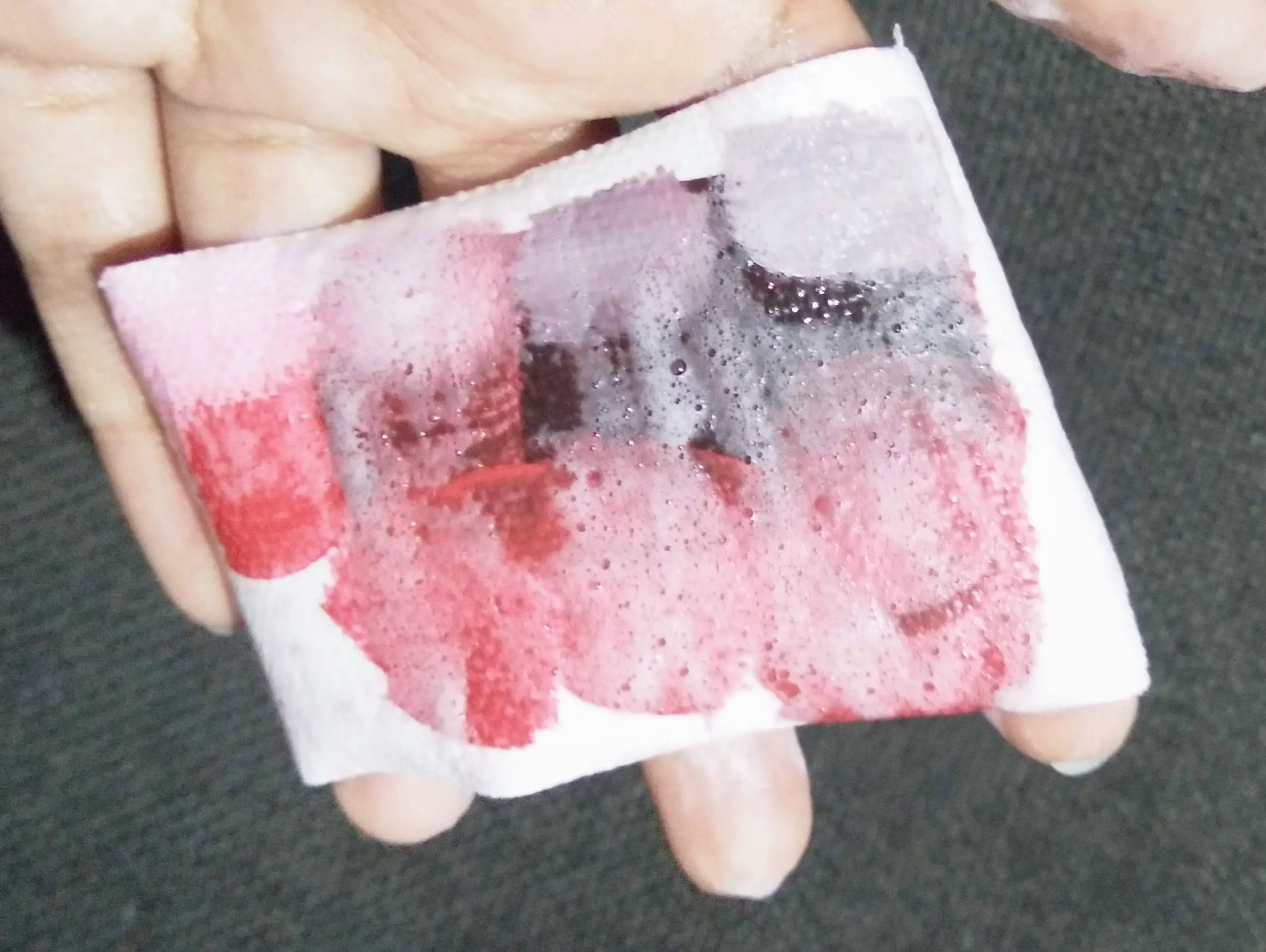It is common for us artists to get messy. Acrylic paint can get on our hands, clothes, carpets, tables, walls, and other places that are not intended for it. Sometimes it is harder to wash off or get off acrylic paint on surfaces. So you might wonder is acrylic paint washable?
In general, acrylic paint is easily washable when the paint is wet or if painted on smooth rigid surfaces that are unprepared for painting. But it is harder to remove acrylic paint on prepared or unprepared surfaces that are porous without a solution like alcohol and scrubbing.
Even though acrylic paint is tough to remove from some surfaces like fabric, it is not impossible to do with the right method and solution. As a rule of thumb, acting fast before the acrylic paint starts to cure will help tremendously.
Is acrylic paint washable?
Acrylic paint is versatile and can be used on almost any surface. However, because of the same reason, it is hard for us to remove acrylic paint from surfaces that are not intended to put paint on.
However, these acrylic paint stains can be washed off with either soap and water, alcohol, vinegar, acetone, trisodium phosphate, peroxides, or bleach. Scrubbing also helps to lift acrylic paint off of the surface.
Acrylic paint can be washed off with water easily when it is still wet. Even after drying acrylic paint can be cleaned off the surface with water if painted on an unprepared, smooth rigid surface like glass. It is very hard to remove acrylic paint after drying when it is painted on a prepared surface and when you have varnished the painting.
In this case, you might think about sanding the surface and repainting but is not the safest option. Because potentially harmful compounds in acrylic paint can be airborne when sanded. If you want to sand a painting, take necessary precautions like wearing a NIOSH P100 respirator.
I have written a whole article about ‘Is acrylic paint harmful?’ You will learn about how acrylic paint can be harmful and the necessary precautions to be taken.
Is acrylic paint washable on different surfaces?
Acrylic paint on different surfaces acts differently. You will notice that acrylic paint on smooth and rigid surfaces like glass peel and wash off easily. But if you prepared any surface even glass, and varnished it, paint is permanent and not washable with water.
Because of the variability of acrylic paint on different surfaces, I thought about testing every surface with acrylic paint by trying to wash it using either soap and water or other solutions. Below I have shared my experiments as well as other artists’ opinions and methods of washing off acrylic paint on different surfaces.
I have also written a comprehensive list of chemicals and materials that can be used to strip and remove acrylic paint. You will be able to easily choose the right method to strip and remove acrylic paint according to your needs and your budget with the handy chart included in that article.
Is acrylic paint washable on the skin?
Acrylic paints are washable by soaking in the acrylic-stained hand with water and then lightly scrubbing with soap. It will easily remove and peel off acrylic paint. You can use a little warm water to make the process easy as well. Make sure to clean acrylic paint stains on the skin after every painting session.
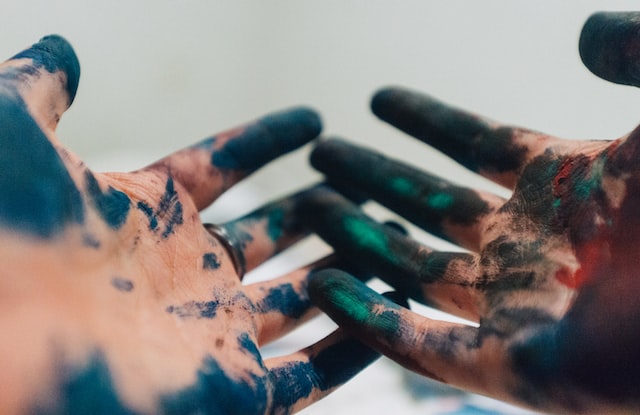
The sooner you act on removing acrylic paint, the better. Because wet acrylic paint can be removed easily with just soap and water. You should not keep acrylic paint for a long time on the skin. If there is a little cut or injury on your hands, paint chemicals can enter your body which can be harmful.
If soap and water did not work on your skin you can use rubbing alcohol. Alcohol can reactivate dried acrylic paint. You can also use oily body lotion, baby oil, or vegetable oil on your hands to get off any remaining acrylic paint after washing with water and soap.
Another great tip is applying baby oil or oily body lotion on the skin before painting. It will help you scrub acrylic paint away easily after the painting session. Do not use mineral spirits like turpentine to remove paint on the skin as it can be toxic.
I have written a whole article about ‘Can you put acrylic paint on your face? is it safe?‘. You will learn about the safety issues of acrylic paint on the skin and the best choice of paint for the skin there.
Is acrylic paint washable on clothes, jeans, and fabric?
Acrylic paint is easier to wash on cloths or fabric with soap and water, when the paint is still wet or not fully cured than when the paint is fully dry or cured. When dried acrylic paint on cloth or fabric is washed the acrylic paint fades away. You will need to scrub hard with your hands or a brush to get paint off of the cloth or fabric.
When the paint is still wet or not fully dried you can soak and wash the fabric with hot water. Some of the acrylics may come off as a sticker or will become slimy which you can pull off.
I have also tried adding alcohol to dry acrylic paint on the fabric. Alcohol reactivates and softens acrylic paint on the fabric, but it helps to get off only a little acrylic paint. So I do not recommend using alcohol for acrylic paint on fabrics or clothes. It can even damage your fabric or clothes.
But some people have had success with alcohol when they soak up acrylic paint stain in alcohol for several minutes to an hour and then scrub the acrylic paint off.
Please take precautions when using isopropyl alcohol or rubbing alcohol. It is flammable and should not be used near an open flame. Denatured alcohol is a poisonous liquid that contains methanol, but it can be used for cleaning purposes.
Some people even have success with using vinegar to remove acrylic paint. Soak the area you want to wash off acrylic paint for 15 minutes and then scrub the paint off with an old toothbrush, a plastic spoon, or a knife. As vinegar is a very mild acid it will not damage the fibers of the fabric.
You can also use Murphy® oil soap. Let the fabric with acrylic paint stain soak in Murphy® oil soap and then scrub well to remove acrylic paint. However, Murphy® oil soap is originally made for wood cleaning surfaces.
Some websites suggest using hair spray on acrylic paint stains on the fabric. I tried that on a dried acrylic paint stain on a jean. It did not work on acrylic paint even though it made the hair sprayed area stickier. Also, I have noticed that dye or paint used on the jean comes off on my hands when scrubbing. So I do not recommend using hair spray on acrylic paint-stained fabric.
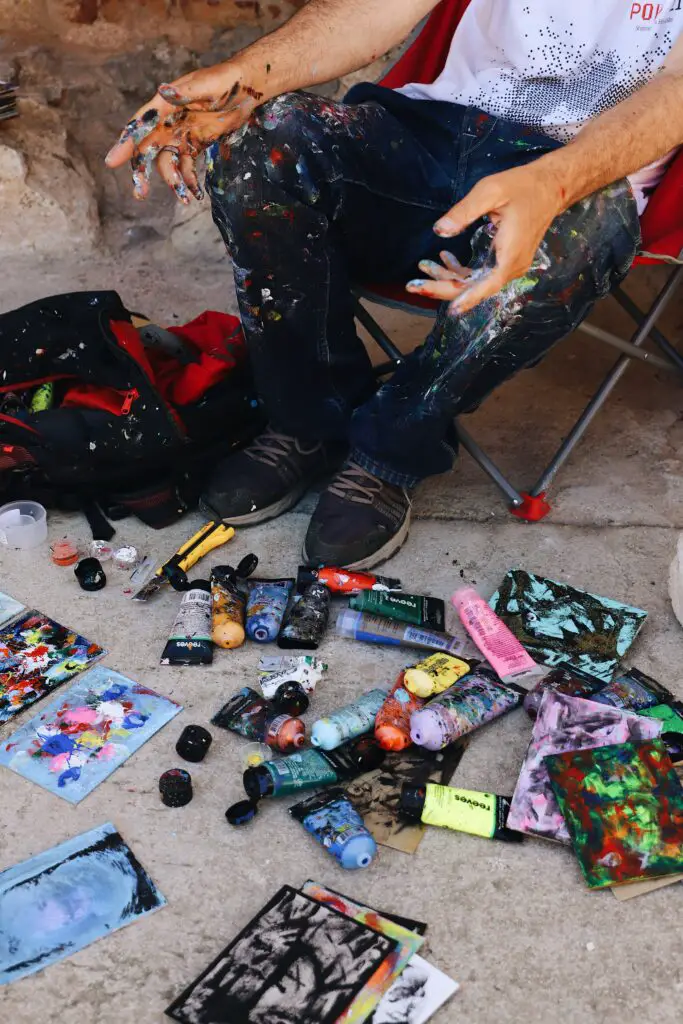
Acrylic paints grab onto the fibers of the fabric very hardly. Even some pigments of acrylic paint might seep into the fabric and stain it completely. However, what I have found is that when you use cheap, craft, or student-grade acrylic paint on fabric, it is easier to wash them off than artist-grade acrylic paints.
Also, something you need to keep in mind is that when you stress out your clothes with different solutions and scrubbing, it will not only fade away acrylic paint, but also it may wear out the fabric or cloth as well.
Instead, you can paint over the acrylic paint stain and make beautiful art in that fabric or cloth if possible. To prevent it from fading you can mix acrylic paint with a textile medium. If you want to change a design you already painted, you can simply paint over it with an opaque color and change the design.
You can also fix a separate piece of fabric or canvas on the jeans and paint it. I have written a whole article comparing acrylic paint and fabric paint. So that you will know what is the best choice for a design on fabric and why.
Is acrylic paint washable on hair?
Art can be messy sometimes and you can get acrylic paint anywhere like on your hair. When there is acrylic paint on hair, hair gets stiff. But it can easily be removed with water and soap especially when acrylic paint is not fully dry. But in most cases, it will be easily removed when we are taking a shower. Water can loosen up acrylic paint and you may not even need soap to remove acrylic paint.
But if you kept acrylic paint on your hair for a long time, there is a lot of acrylic paint and you have curly hair, it will be harder to remove acrylic paint. Try to wash well with soap and water. Soak your hair in water first and keep it wet for a few hours. Then try to wash with soap and water.
If washing with water and soap didn’t work, the most nonharmful and safe way to remove acrylic paint from hair would be to cut your hair. Get a short haircut that would chop off the acrylic-clumped hair. But I am pretty sure you can remove acrylic paint with water and soap like in most cases.
If you have color-treated hair, use recommended shampoos and conditioners to wash hair. Otherwise, your hair is prone to damage. Especially do not use alcohol or acetone to remove acrylic paint on hair, these products will make your hair dry out and even damage your hair.
Is acrylic paint washable on glass, plastic, and metal?
Acrylic paint, wet or fully dry, on glass and plastic will peel off readily when you try to wash and scrub them. This happens especially on unprepared glass and plastic surfaces which has not been sealed or when the paint is still not fully dried or cured. To make it easy to remove acrylic paint, you can add alcohol or Murphy® oil soap and keep scrubbing.
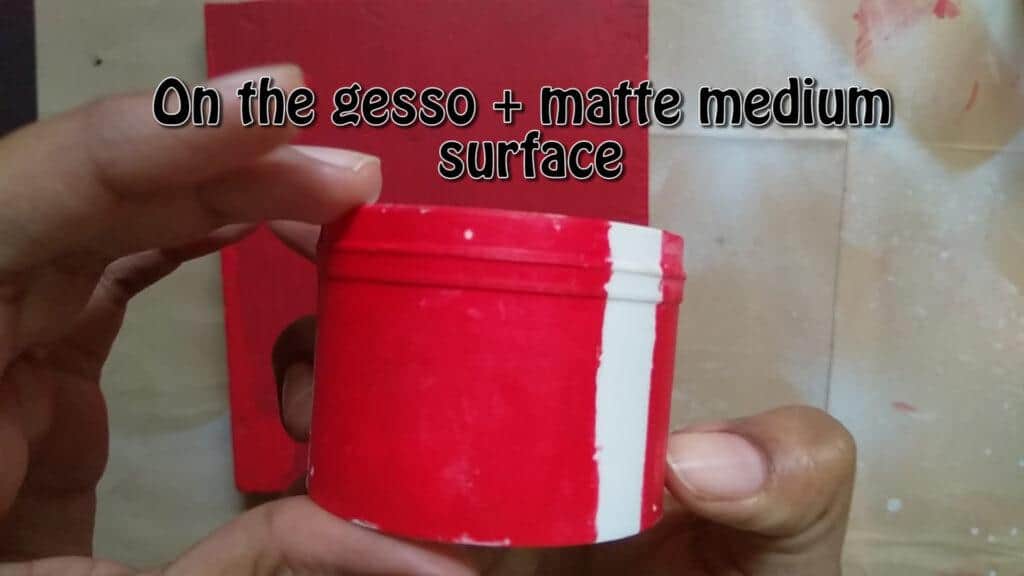
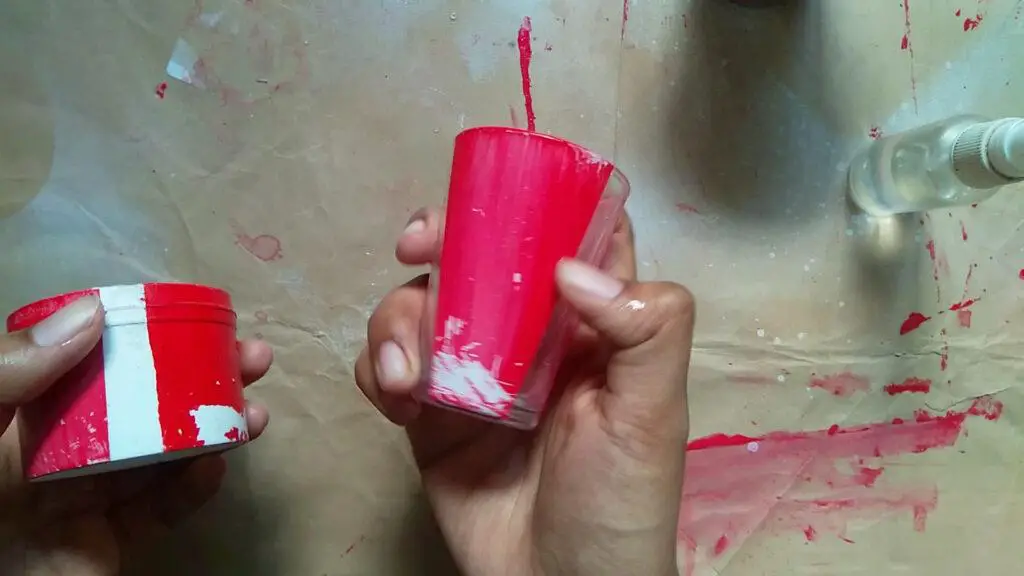
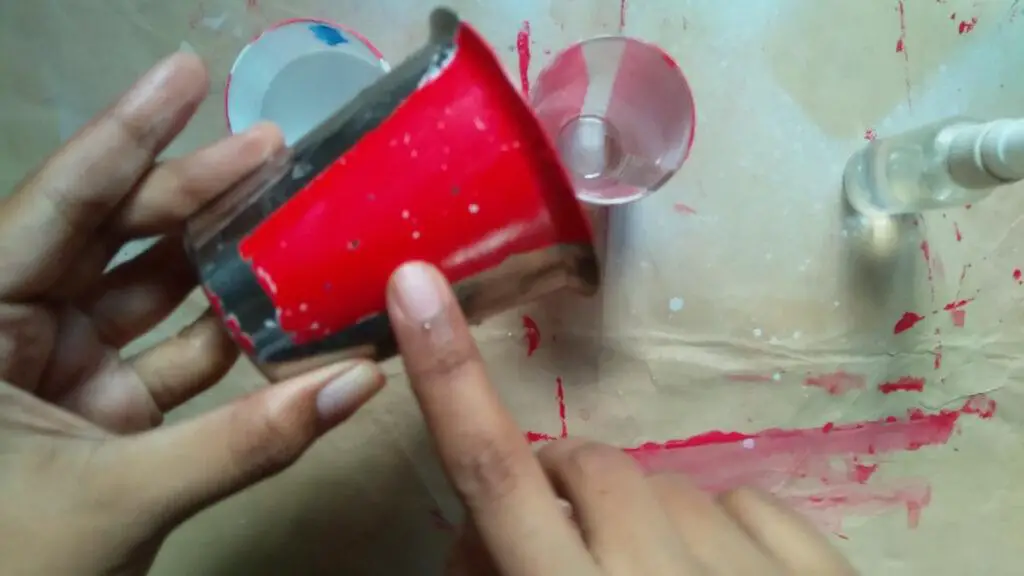
If you have painted with acrylics on a prepped glass or plastic and sealed it, it will not come off after fully drying or curing even when you try to wash it. If you have a fully prepped surface like this I had a little luck with alcohol. Alcohol can wipe away your sealer. If you keep adding alcohol and scrubbing, the paint will eventually come off.
For plastic using acetone is not recommended because it can damage the plastic. But you can use alcohol as it is mild than acetone.
Unlike plastic or metal, you will need to take extra care when removing acrylic paint off of glass, because it is fragile. If you are trying to wash acrylic paint off of very thin glass, do not hold too tightly or rub vigorously.
First, soak the acrylic paint on the glass by spraying water on it. Leave it wet for 5 to 10 minutes. Then take a plastic scraper, a rug, or a tissue and wipe off acrylic paint. Use a plastic scraper to remove hard-to-remove acrylic paint layers. Don’t use a metal knife to scrape acrylic paint as it leaves permanent scratches on glass.
If you are interested to know how to prep and seal acrylic paint so that they stick well to plastic, glass, and metal, you can read the articles I wrote; How to stick acrylic paint on glass, 5 Easy steps to stick acrylic paint on plastic, A complete guide on sticking acrylic paint on metal.
Is acrylic paint washable on cement?
Cement is a very porous surface. So when you apply acrylic paint on cement it tends to soak into the surface rather than sit on top. The pigments also will seep into the cement and stain cement.
I applied green color acrylic paint on cement and waited for it to dry for 24 hours. Then I try to wash acrylic paint stained with a brush, soap, and water. Some of the green color paints came with soap and water but it did not give a visible color change. I have also tried with alcohol to remove acrylic paint on, but it did not work either.
However, you can use a sandblaster to completely remove the painted area on cement. Also using acetone on a smooth cement surface will give better results. When the surface is less porous and rigid, easier it is to remove acrylic paint.
Is acrylic paint washable on walls?
Acrylic paint is easily washable on walls. You can remove acrylic paint on walls by wetting a cotton ball and rubbing it, using baby wipes or Lysol wipes, and using a magic eraser to scrub off dry acrylic paint on the wall.
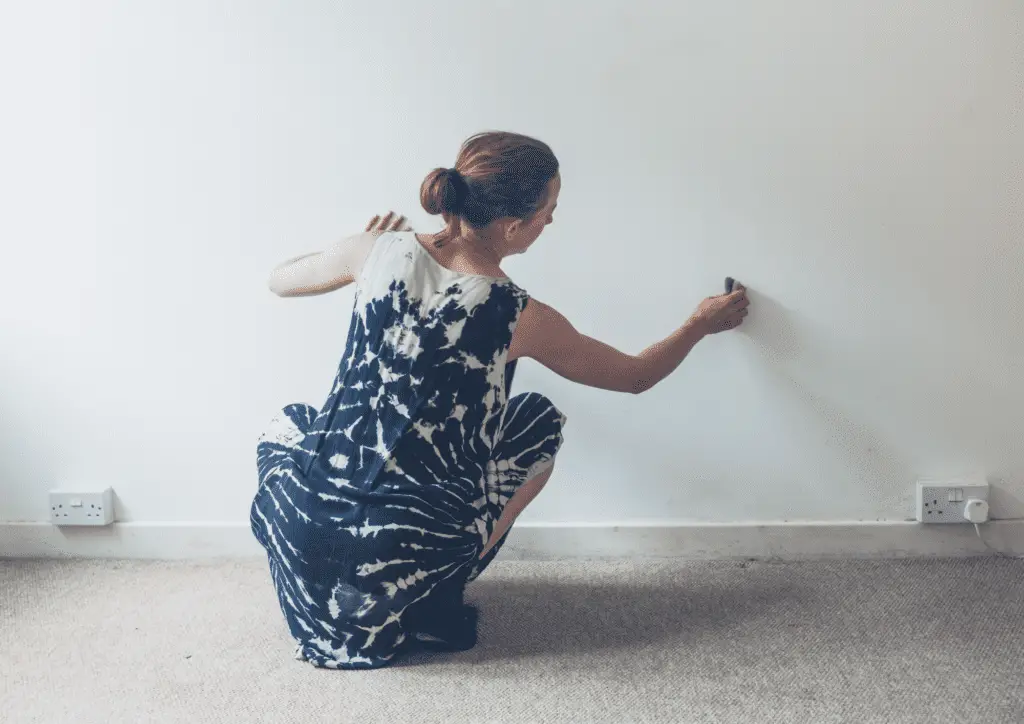
You can also use other solutions like alcohol, hydrogen peroxide, ACV(Apple cider vinegar), TSP (trisodium phosphate)bleach, disinfectant liquids, and acetone to wipe off acrylic paint from the walls. Like with any other surface the wet acrylic paint is easier to remove than after drying.
If none of these methods worked, you can simply paint over the stains with acrylic paint of the same color as the wall. If you are interested to know how to remove acrylic paint from walls in detail, following each method mentioned here, you can read the article ‘Can acrylic paint be washed off walls? (6 Best methods)‘.
Is acrylic paint washable on canvas?
Acrylic paint on canvas can be removed using 60% or higher rubbing alcohol or isopropyl alcohol. Soak a piece of fabric or a cotton ball with rubbing alcohol and then rub over the canvas to remove acrylic paint. You can use an old artist’s brush or a toothbrush to rub dissolved acrylic paint off of the surface.
It will be harder to take off acrylic paint that is trapped in the grooves of the canvas. However, you will be able to take off thick layers of acrylic paint. Once you removed almost all the acrylic paint, you can gesso over the canvas. Then you can use this refurbished canvas for any painting you like.
You can use acetone to remove acrylic paint from the canvas. But it is not a recommended method because acetone can remove all the paint layers on the canvas down to the canvas fibers including acrylic gesso. In this case, you can simply paint over the canvas with 2 or 3 coats of gesso and paint again, with no acetone.
Acetone is a much stronger solvent than alcohol. It can dissolve most plastics but alcohol can only dissolve a few plastics.
It is important to note that sanding a canvas or any other surface with acrylic paint is not a good idea especially if you are using artist-grade acrylic paint. Artist-grade acrylic paint contains the original pigment that can be potentially harmful when inhaled. Therefore don’t make acrylic paint airborne unless recommended by the manufacturer.
Is acrylic paint washable on wood?
You can easily remove acrylic paint on the un prepped wood surfaces by just washing with soap and water. Make sure to scrub with the brush well. If acrylic paint is cured or painted on a well-prepared surface or if you have sealed acrylic paint using a paint stripping product, it will be harder to remove.
However, if the wood you painted with acrylics is more porous, acrylic paint may soak into the surface. It will be harder to remove acrylic paint in this case. You can use a solution like alcohol or Murphy® oil soap to remove the top paint layer. Then gesso on top and repaint the wood surface with acrylics.
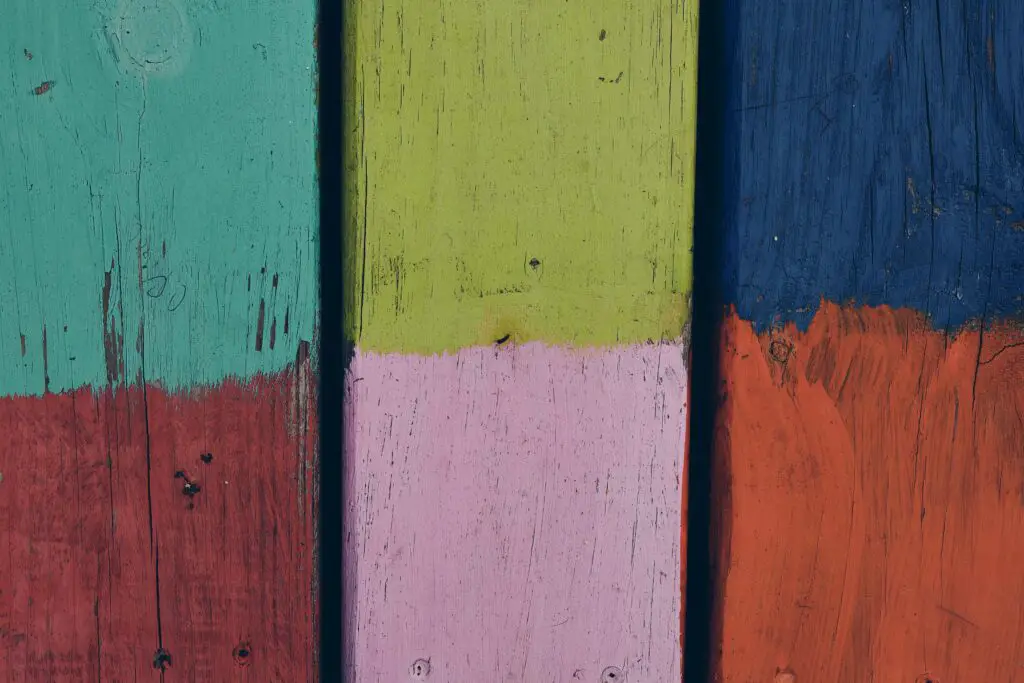
You can use alcohol or other commercial products like Murphy® oil soap to remove acrylic paint from finished and unfinished wood. Murphy® oil soap is one of the best paint stripping solutions out there. It is a 98% natural wood cleaner that does not damage the wood. You can get it at Walmart, Target, Dollar, Menards, Home Depot, Lowes, or grocery stores near you.
Acrylic paint is easily washable on furniture when the paint is still wet or not fully dry. You can take a damp cloth and rub it on the acrylic stain on the wood until it is removed. Use a plastic scraper to scrape away the remaining acrylic paint. Be cautious if using alcohol on furniture as it can strip away the varnish or top coat.
However, it is best to use acetone if you want to strip away all the paint layers and varnishes on wood or furniture. It will clean the wood surface better than alcohol.
Conclusion
Acrylic paint can be washed off almost any surface if you follow the right methodology. If acrylic paint is not well bound to the surface like in the case of non-porous rigid surfaces, it is easier to remove acrylic paint. When there is poor adhesion of acrylic paint to the surface, you can use just soap and water to wash off acrylic paint. But when acrylic paint has better adhesion to the surface you will need to use solutions like alcohol and acetone. These solutions are used to dissolved waterbased paints.

